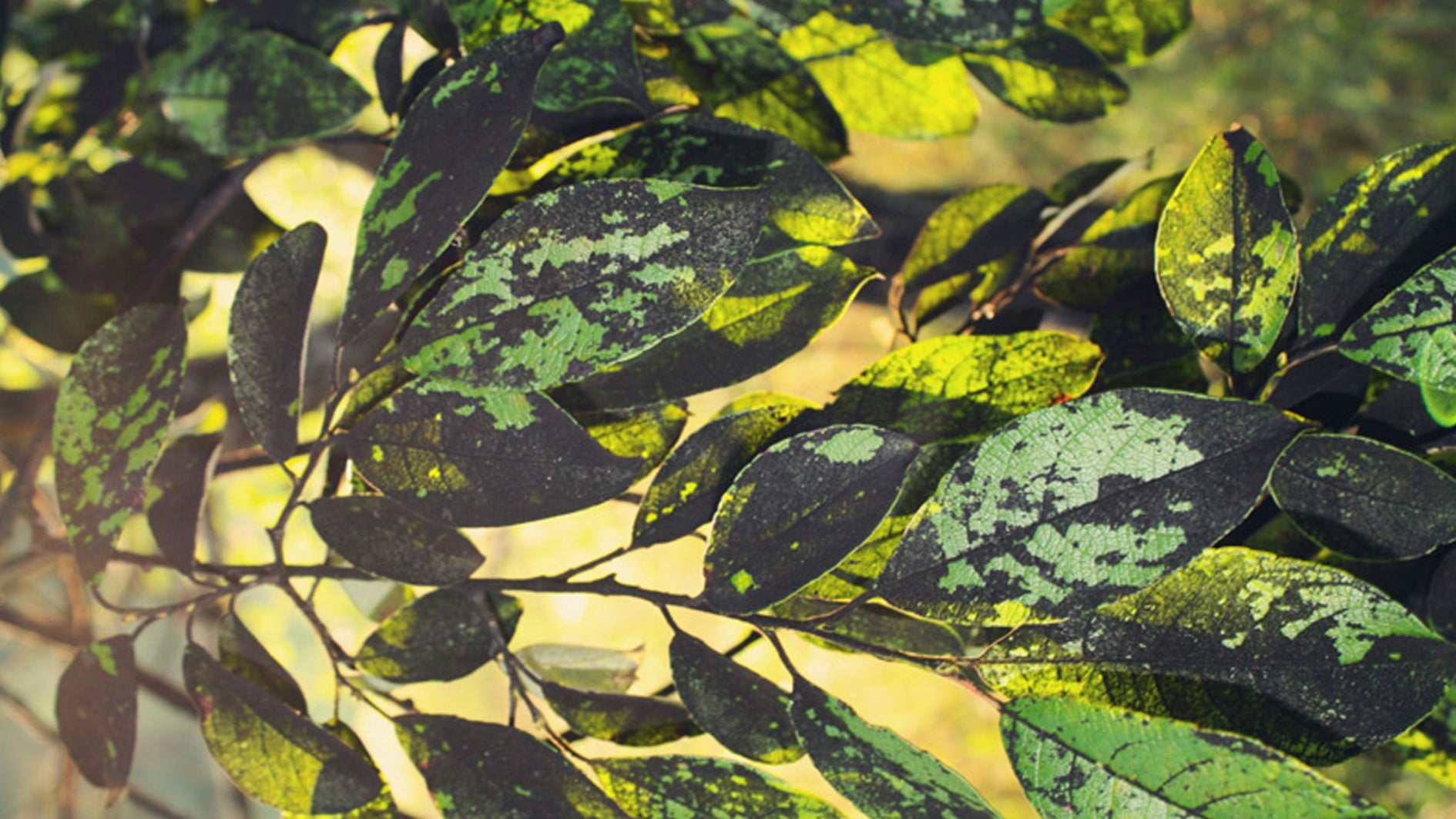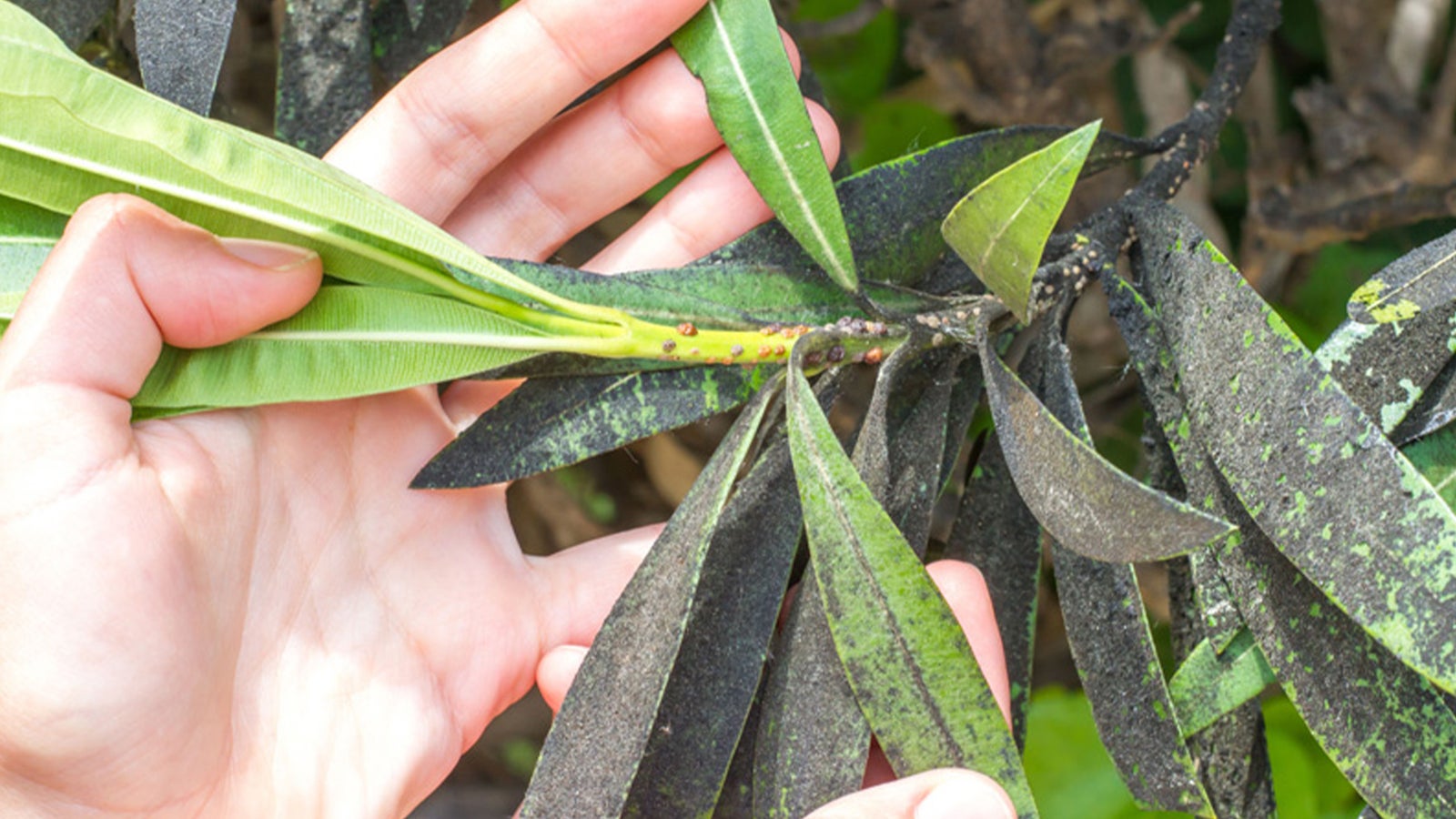
Sooty Mould
08 Aug, 2021
Black Sooty mold is a sure sign that your plant has a sucking insect feeding on it, usually Scale, Aphids or Whitefly which are excreting honey dew, a perfect place for sooty mold to grow on.
Honeydew can drop from above and often lands on foliage of plants beneath the one with the insects on it. So be sure to look for the insects and treat the plant with the pest on it.
Once the insects have been treated the sooty mold will dry and flake off, you can help this by gently hosing the mold off.
Can also occur underneath an infected plant, as the honeydew (the sugary excretion) falls from the infected plant onto ground, or foliage of plants below.
Prevention
Keep plants healthy by keeping them well fed and watered. Healthy plants are less likely to be attacked by sap sucking insects.
Attract predatory insects that prey on pest species into your garden by planting flowers such as: lavendar, hyssop, borage, alyssum, and phacelia.
Natural Treatment
Spray plants thoroughly with Bugtrol being sure to get on the underside of the leaves and into all nooks and crannies.
Spray in the evening to avoid harming beneficial insects.
Treat the insect problem and the sooty mold will slowly disappear.
Treatment
Spray non edible species with Groventive Garden and Bioneem mixed together, if spraying onto palms and ferns omit the Bioneem.
For edible crops spray with Bugtrol.
When using sprays and chemicals always read the label and follow instructions carefully. Spray in the evening to avoid harming beneficial insects.
